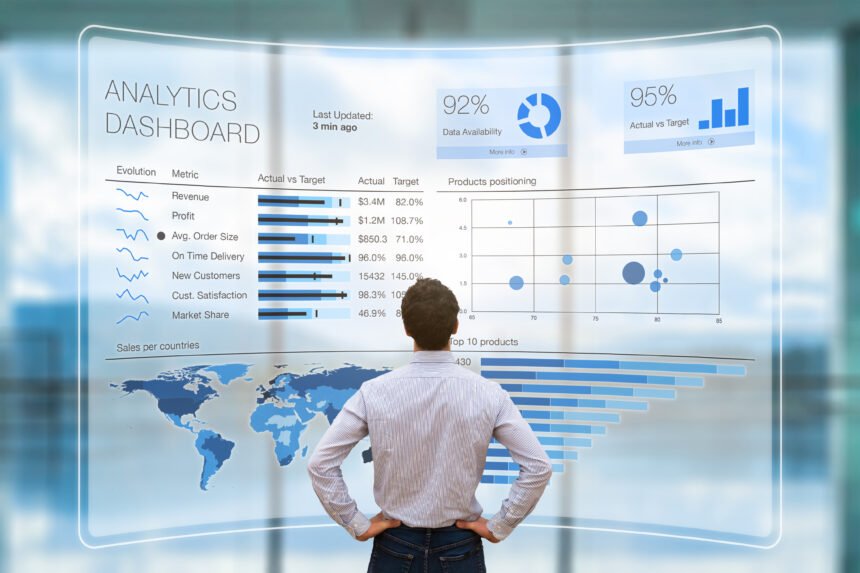Enterprises collect an unprecedented volume of data about their consumers, sales, and products. In most scenarios, these rows of information move very fast, are too big, or they surpass the processing capacity of the existing technology applications in the organization. But with big data and business intelligence, enterprises get to enhance operations, their profit margins, and also make quicker, more brilliant business decisions.
The retail market has been trading on its gut instinct for years. But now, they’re recognizing the importance of capturing data around their strategic business activities. The ability of businesses to back their decisions up with evidence of things that might work is essential.
BI and Big Data analytics have revolutionized a myriad of industries, with the retail sector being the biggest beneficiary. Big players like Walmart and Amazon leverage BI and Big data analytics to enhance their retail performance. However, these benefits aren’t limited to full-blown companies alone: medium and small businesses can also realize great value in integrating the systems into their operations.
The advantage that comes with the ability to process significant volumes of data is the main attraction of business intelligence and big data analytics.
Here’s how enterprises can turn BI and big data into a business advantage.
1. Sales analysis
In retail business – supermarkets, department stores, and e-tailers – transaction histories and sales receipts can produce incredible volumes of data depending on the business size. These rows of information present a massive opportunity for businesses to analyze their sales. However, valuable insights are not based on volume alone.
Integrating a successful business intelligence solution can assist retail organizations to pull out essential information from a chunk of data, by addressing the question at hand. It gives definite answers to questions like how much of a product is being sold and the type of client that’s buying the product as well as the store or outlet that sold the product, and the specific time.
These are critical answers that retail businesses need to improve their decision-making process. The trends in the data showcase the strengths, weakness, and opportunities for the company. For instance, one can know when they make the most sales and the time. This way, they ensure that that particular store has enough commodities to meet the demands. The data also points out areas that perform poorly, allowing the enterprises to make drastic decisions to rectify the problem and identify potential opportunities.
That said, the real value of BI or Big Data isn’t just based on the ability to address the questions on an individual basis; it comes with the ability to converge data from multiple systems and sources so that users can gain more insight from the available information.
2. Inventory analysis
Like never before, big data and business intelligence are helping to merge business systems in retail stores to enhance operational efficiency while providing higher profits. BI and big data allow operations managers to have a detailed summary of the operations, so they can eliminate any bottlenecks and enhance efficiency.
The access to real-time information also enables finance managers to take care of traditionally narrow margins of profit with greater context to make sure they enjoy maximum gains from investment into inventory.
And since all these processes happen on the cloud as opposed to the traditional books and hard drives, there’s a reduction in hardware and maintenance costs. Enterprises can also integrate cloud into the current systems with less expense.
3. Consumer analysis
Knowing who the most profitable consumers are is a crucial concept in retail business intelligence and Big Data. The sales analysis allows businesses to increase their profits margin by understanding who their most loyal consumers are and strategizing on ways to keep them on board. The realization also lets enterprises define a unique opportunity around insight creation.
Having access to real-time consumer demand pattern information allows enterprises match their inventory to their orders accurately, which results in customer satisfaction. Consumer analysis can also help predict seasonal spikes, trends, and depression. This way, retailers can always avail the right inventory levels to match their demands.
Besides, the cost incurred in finding and acquiring new clients is far much expensive than the cost of maintaining the existing ones. So it’s more realistic for retailers to pay attention to what the data is saying concerning these individuals.
Consumer analytics, as part of BI and Big Data, can be leveraged to create and maintain loyalty programs aimed at pleasing these customers. This plan is sure to increase the consumer retention rate and also result in more business through referral of happy and contended buyers.

